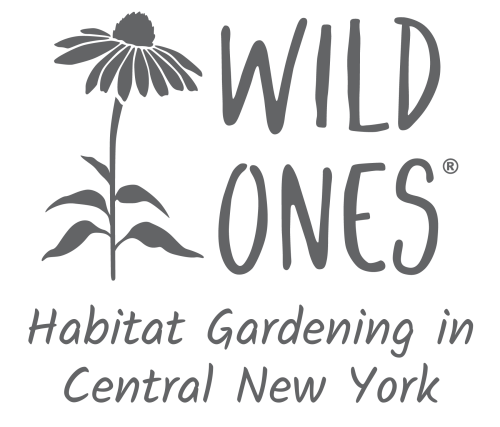What is garlic mustard (Alliaria petiolata)?
It’s a non-native invasive plant that was brought from Europe in the 1800s for herbal uses and erosion control.
Since then, it has spread throughout the Northeast, Midwest, and Northwest US, threatening native ecosystems.
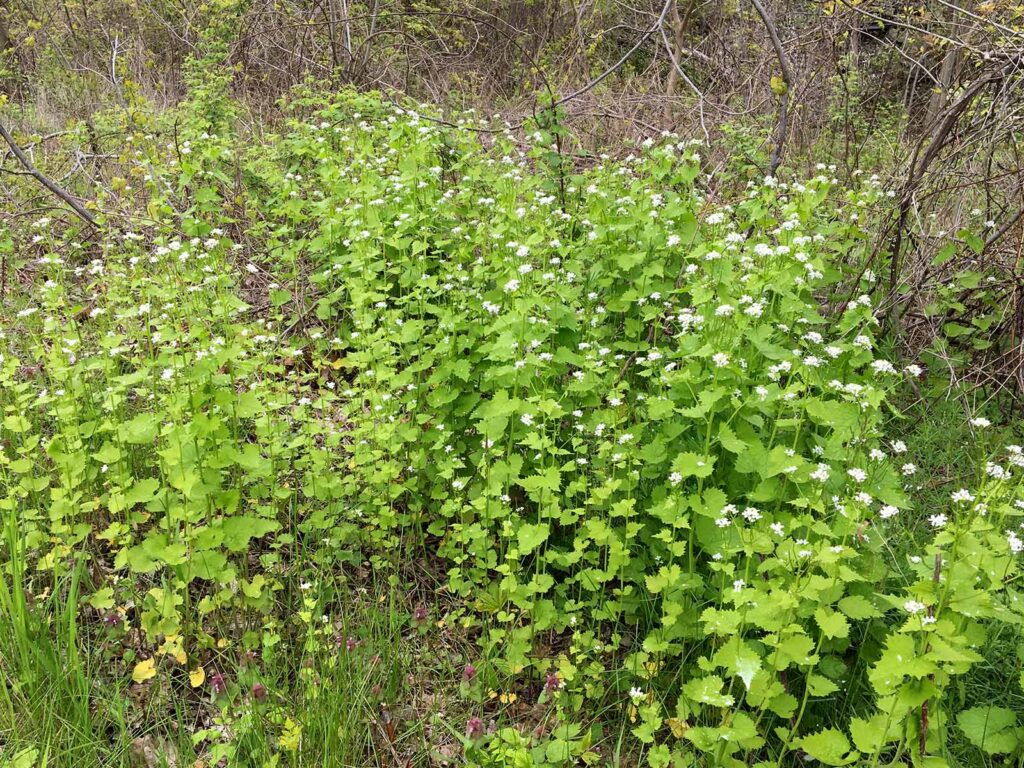
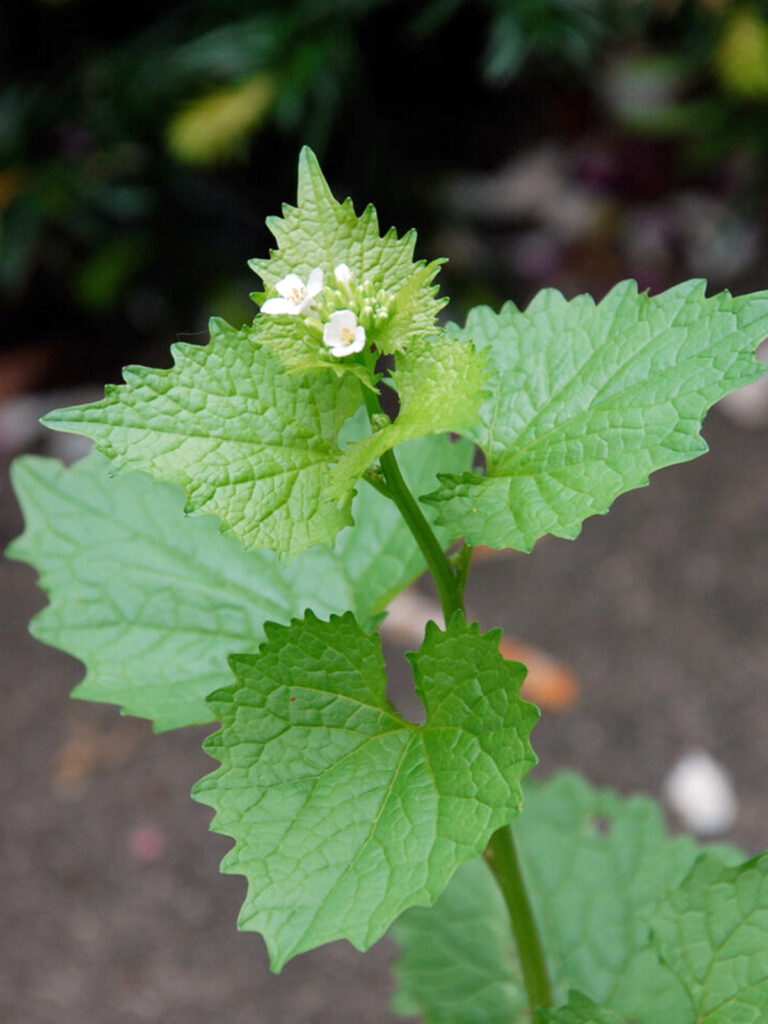
It’s a biennial, which means it sends up a rosette the first year, then flowers the next year. Understanding this is central to controlling it.
It’s also allelopathic, meaning that it releases chemicals that inhibit the growth of other plants which is what helps it disrupt native ecosystems.
Since 2017, HGCNY members have worked to keep garlic mustard in check in parts of the Baltimore Woods forest.
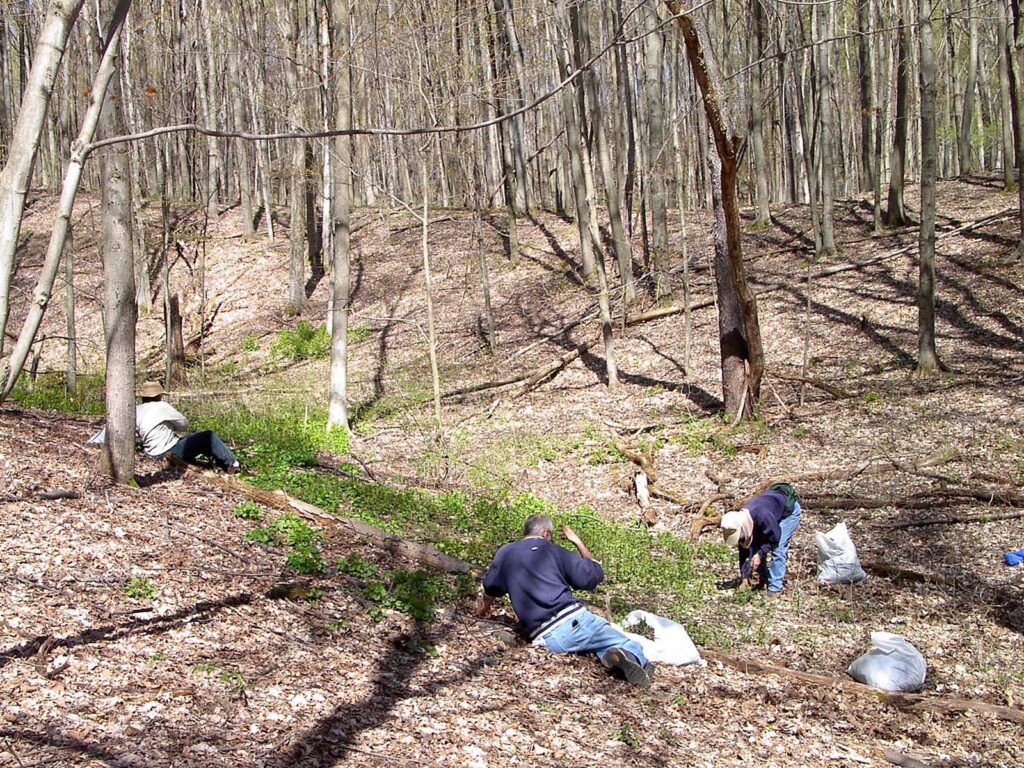
Interested in helping the HGCNY Chapter of Wild Ones with the continuing Garlic Mustard removal at Baltimore Woods? See the HGCNY Wild Ones Events Calendar for this year’s removal dates!
What we’ve learned so far
Once established, garlic mustard becomes part of the community, steadily increasing in presence but with large annual fluctuations in cover and density. We found a lot more garlic mustard in 2022 compared to 2021. One unfortunate result was that we could not remove plants from as large an area as we did previously.
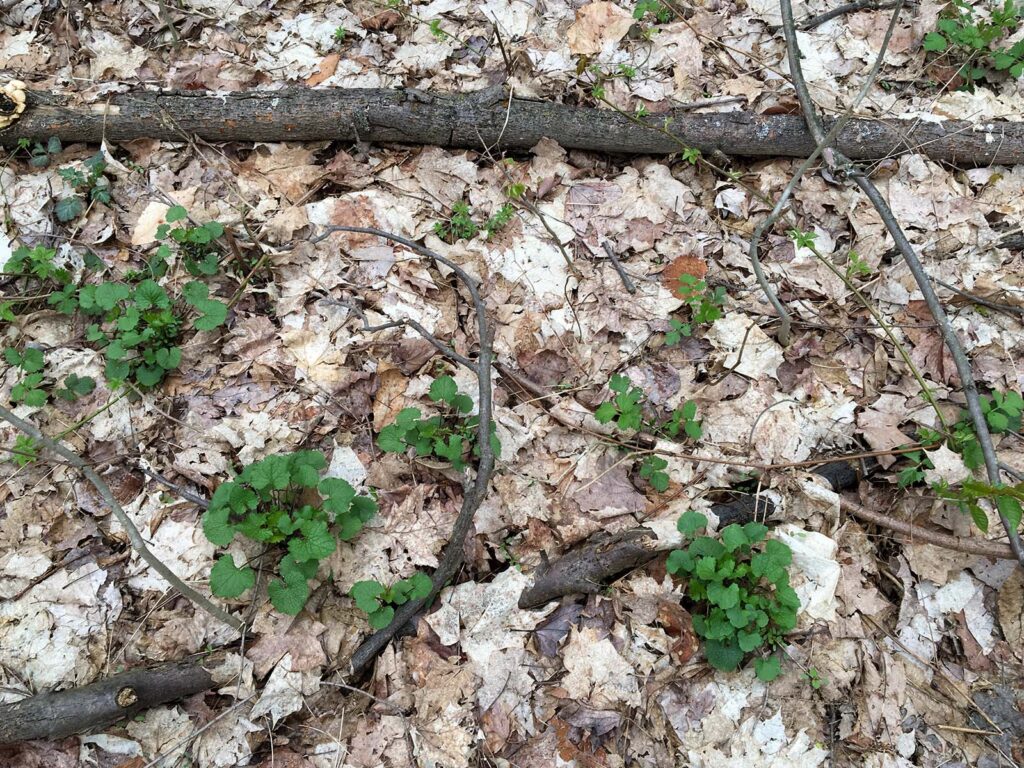
Did we learn anything helpful? The usual way to deal with garlic mustard is to pull up the plants and remove them from the site. We have learned the last two years that up to the time the flowers open, we can just pull and drop the plants – they don’t have to be removed. That might seem obvious – how can a plant develop if it’s removed from the soil? But we also know that at some point in the plant’s development it will continue to develop seeds even if removed from the soil and dropped! We are trying to find that point.
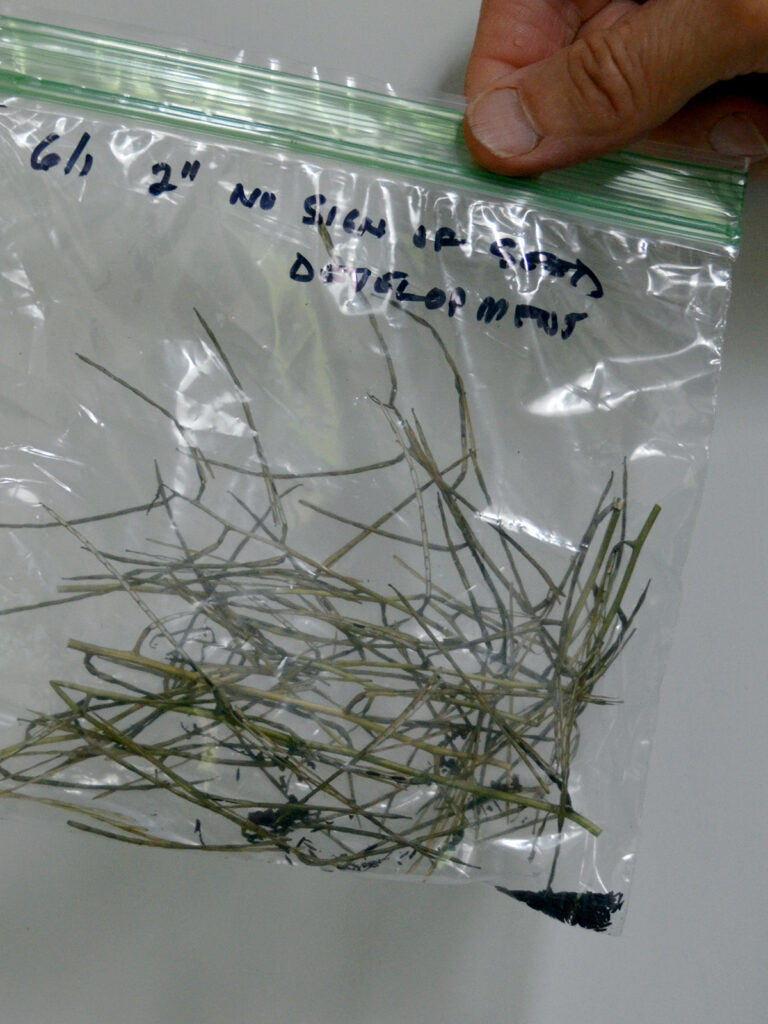
We are also continuing to experiment with pulling plants, cutting off the roots, cutting off the flower stalks, and dropping everything on the ground. Again, chopping up the plant seems to work up to some point in the plant’s development and we are still working on finding what that point is.
Next year (2023) we will carefully collect and date flower/seed stalks each time we’re working at Baltimore Woods to see at what point viable seeds will be developed.
Many thanks to those who have participated in garlic mustard removal. And we invite others to join us. It can be both fun and interesting, and a good reason to get out into nature! See the HGCNY Wild Ones Events Calendar for this year’s removal dates!
Resources
- Nat’l Park Service Invasive.org:
- NY Invasive Species:
- The Nature Conservancy:
- Indiana Native Plant Society
- Watch for garlic mustard aphids – so far, found only in the Midwest
